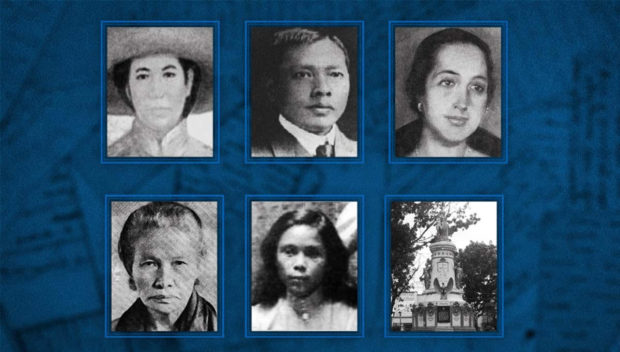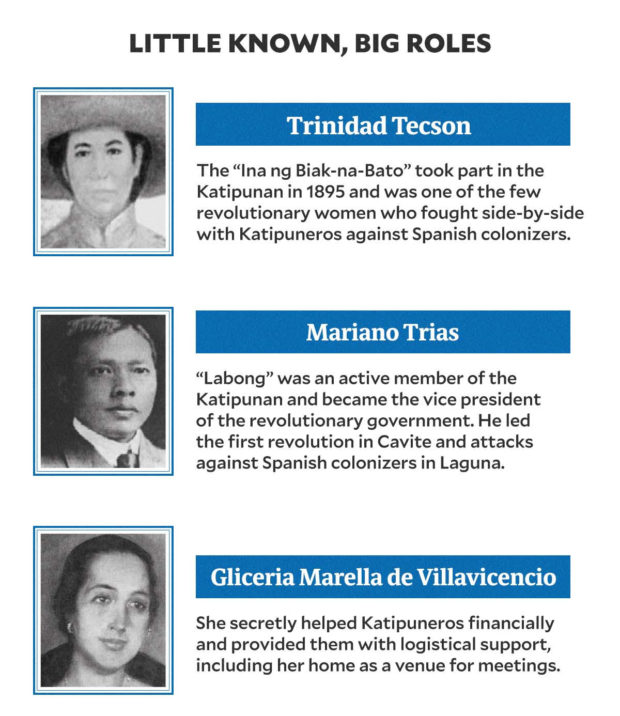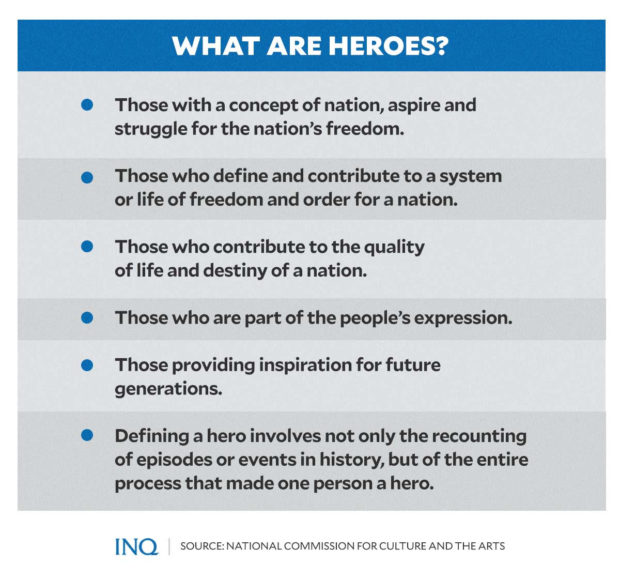National Heroes Day: Remembering the lesser-known people who fought for freedom
MANILA, Philippines—National Heroes Day, which is celebrated every Aug. 29, offers an opportunity to celebrate “the bravery of not one, not a few, but all Filipino heroes who have braved death or persecution for home, nation, justice, and freedom.”
READ: ‘A revolution has no end’
Unlike Rizal Day and Bonifacio Day, the Official Gazette said National Heroes Day specifies no hero since the law that mandated the celebration “does not name a single one.”
The celebration dates back to the American Colonial Period, when the Philippine Legislature, which was then dominated by Filipinos who represented the national aspiration for independence, first enacted Act No. 3827.
The Act declared the last Sunday of August every year an official national holiday. However, some stated that Nov. 30 then, while already celebrated as Bonifacio Day by virtue of Act No. 2946, was also held to commemorate all Filipino heroes.
While National Heroes Day and Bonifacio Day were celebrated on the same day, there were separate celebrations—a formal military review of the cadets of the University of the Philippines and a ceremony at the Bonifacio Monument in Caloocan.
Article continues after this advertisementBut in 1952, then President Elpidio Quirino reverted the celebration of National Heroes Day to the last Sunday of August. The celebration took place on Aug 31, 1952, with the secretary of the Department of Education as head of the committee.
Article continues after this advertisementFormer President Corazon Aquino’s Administrative Code of 1987 adopted this in Executive Order No. 292, which provided for a list of regular holidays and nationwide special days, setting National Heroes Day every last Sunday of August.
It was on July 24, 2007 when then President Gloria Macapagal-Arroyo signed Republic Act No. 9492 which mandated the celebration every last Monday of August to reduce work disruptions by moving holidays to the nearest Monday or Friday of the week.
To celebrate National Heroes Day this year, INQUIRER.net lists down some lesser-known Filipino heroes who tirelessly struggled for independence:
- Trinidad Tecson
Tecson, who is considered “Ina ng Biak-na-Bato,” was born on Nov. 18, 1848 in San Miguel de Payumo, Mayumo, Bulacan. It was in 1885 when she took part in the Katipunan, the Philippine Veterans Affairs Office said.
She then became one of the few revolutionary women who fought side-by-side with the Katipuneros for freedom from Spain. She was in 12 bloody battles in Bulacan, including the Battle of Biak-na-Bato. She is the first Filipina to take part in Sanduguan.
- Mariano Trias
Trias or “Labong” was an active member of the Katipunan and became the vice president of the revolutionary government. He then led several attacks in Cavite and Laguna against Spanish forces.
When the revolutionary government was reorganized in Biak-na-Bato in 1987, he was again elected as vice president with Emilio Aguinaldo as president. Trias continued to take an active part in the second stage of the revolution.
- Gliceria Marella de Villavicencio
Villavicencio, who was born in Taal, Batangas on May 13, 1852, secretly helped Katipuneros financially and provided them with logistics they needed to execute plans and even offered her home as a place for meetings.
One of her greatest contributions to the revolution was donating the ship “Bulusan”, which served as the first warship of the Filipinos. Even after the end of the Spanish colonial government, she continued helping revolutionaries against the Americans.
- Teresa Magbanua
Magbanua is considered the “Visayan Joan of Arc.” She led revolutionaries in the Visayas and then did all she could do to help the resistance movements against the American and Japanese forces.
While she was not an active fighter in World War II, Magbanua did what she could to resist the Japanese occupation. She sold her personal belongings and even her property in Iloilo to help and finance local guerillas.
- Macario Sakay
Sakay was a zarzuelista who conveyed messages against the Spanish colonizers. He took part in the Katipunan in 1984. Then in 1902, when the Philippine-American War ended, he continued his struggle and asserted Filipinos’ right to self-determination.
- The Bicol Martyrs
The Bicol Martyrs or “Quince Martires” are 15 Bicolano ilustrados, businessmen, and priests, who were sentenced to death for fighting against the Spanish colonizers in the revolution of 1986.
They were falsely accused of planning to kill Spanish officials in Bicol. They were then tried and sentenced by a military court, but their execution intensified the revolution in the region.
‘No national hero’
The National Commission for Culture and the Arts said there is no law, executive order or proclamation that has been enacted or issued which officially proclaims any Filipino as a national hero.
But because of their significant roles in the process of nation-building and contributions to history, there were laws enacted and proclamations issued to recognize these heroes.
Despite the lack of any official declaration explicitly proclaiming them as national heroes, they remain admired and revered. Historians said heroes should not be legislated.
It was on March 28, 1993 when then President Fidel Ramos issued Executive Order No. 75 entitled “Creating the National Heroes Committee Under the Office of the President.”
The responsibility of the committee is to study, evaluate and recommend Filipino national personages/heroes in due recognition of their sterling character and remarkable achievements for the Philippines.
According to the Technical Committee of the National Heroes Committee, here are the things that should be considered when evaluating heroes:
- Heroes are those who have a concept of nation and thereafter aspire and struggle for the nation’s freedom.
- Heroes are those who define and contribute to a system or life of freedom and order for a nation.
- Heroes are those who contribute to the quality of life and destiny of a nation, as defined by Dr. Onofre Corpuz.
- Heroes are part of the people’s expression, but the process of a people’s internalization of a hero’s life and works takes time, with the youth forming a part of the internalization.
- Heroes think of the future, especially the future generations.
- The choice of a hero involves not only the recounting of an episode or events in history, but of the entire process that made this particular person a hero, as stated by Dr. Alfredo Lagmay.


